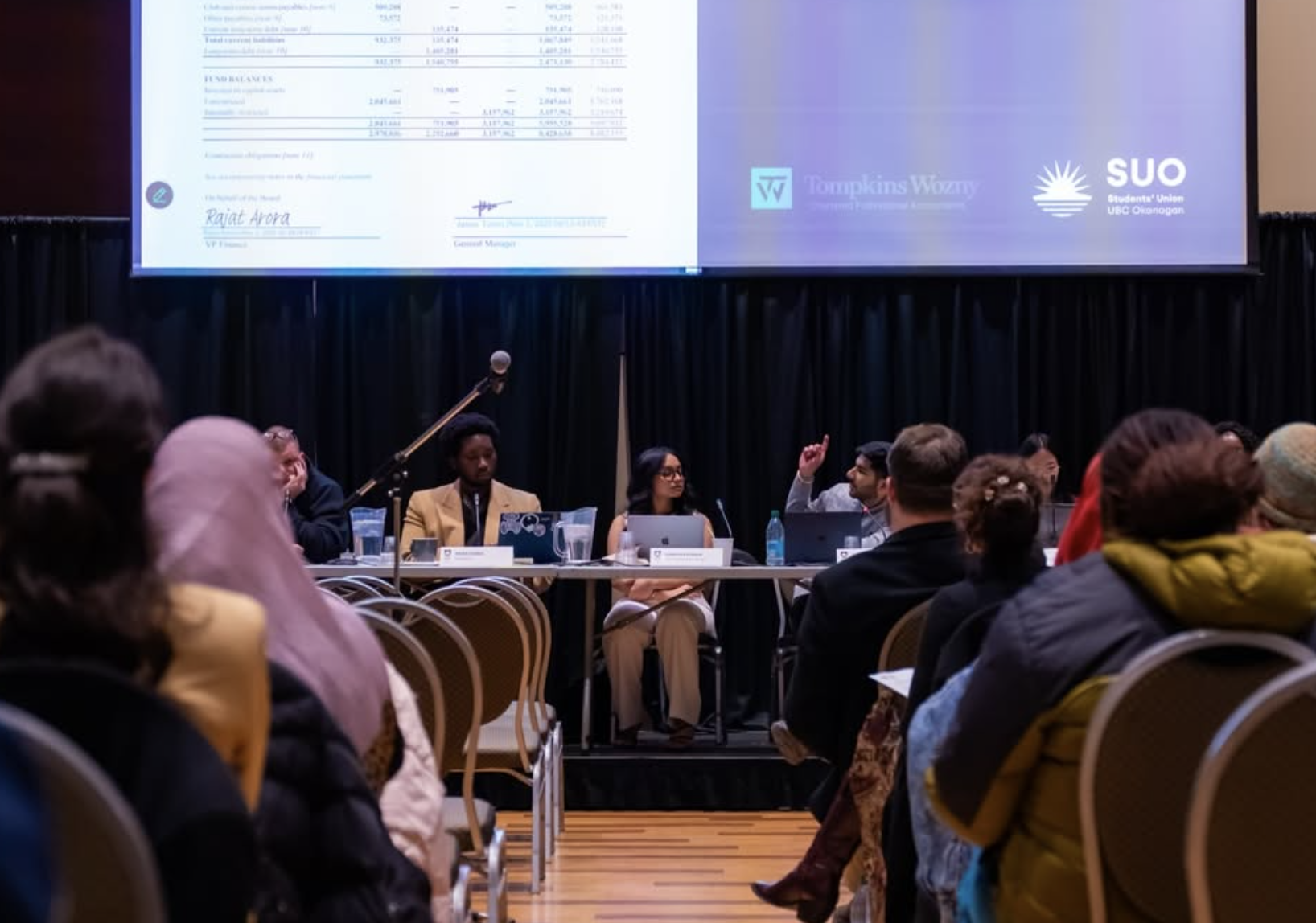
Though the moniker may have been taken before, it doesn’t take long in talking to UBCO PhD. student Siobhan Darlington to realize she’s more than deserving of the moniker “The Cougar Lady.” Siobhan is the one-woman powerhouse at the helm of the Southern British Columbia Cougar Project, a wide sweeping and impressive research project being undertaken with help from Siobhan’s supervisors, Dr. Karen Hodges and Dr. Adam Ford, biologists TJ Gooliaff and Patrick Stent with the Provincial Government, the Okanagan Nation Alliance (ONA, the government representing 8 First Nations throughout the Okanagan), and local hunters.
Compared to many other large species in British Columbia, biologists know relatively little about cougars, but Siobhan and her team are out to change that. Her research focuses on three areas in Southern B.C.: the West Okanagan, the area from Kelowna to Princeton to the US Border, the Boundary, in the areas between Highway 33 and Grand Forks, and the East Kootenay, South of Cranbrook. In all the areas, there are well established cougar populations, but the nuances between them are cryptic. Siobhan has assembled a team of two winter technicians, two summer technicians, contractors from the ONA, and local houndspeople (hunters who pursue cougars using a team of hunting dogs).
Among a range of questions she has, Siobhan and her team focus mainly on understanding what, where, and how cougars eat. Throughout Southern B.C., the project has put out nearly 40 GPS tracking collars on cougars. By using a technique called “cluster analysis” – where the researchers identify where cougars are hanging out over extended periods (likely on a recent kill) – they are able to find cougar kills and investigate exactly what happened.

Despite dramatized and exaggerated reports from the media, cougars are not out in the woods waiting for unassuming hikers to walk by. They are, in actuality, waiting for unassuming deer and elk to walk by. By exactly to what extent cougars are preying on the different species of ungulates (hoofed animals) in B.C. isn’t well known. Siobhan’s work builds upon past research by Chloe Wright, also a PhD. student with Dr. Adam Ford, who’s studies on Mule Deer – a species in decline in the Southern Interior of British Columbia – found that cougar predation is a key impact on the changes in the deer population. But Siobhan is hesitant to put all the blame for low Mule Deer numbers on cougars. As Siobhan notes, there is a litany of effects that could be compounding the problem:
Habitat change from things like fire and deforestation may make it easier for cougars to take mule deer, or things like black bears and wolves and coyotes push cougars off their kills and they have to kill more deer to make up the calories.

And so, finding where exactly cougars are killing their prey, along with determining how long cougars stay with their kills, is key to the goals of the project. Siobhan says cougar’s prey are variable across her study area, mainly she thinks, due to different densities of deer species. In the Kootenays where mule deer are uncommon, elk and white-tail deer constitute the majority of cougar food. But in the West Okanagan, where mule deer are common, Siobhan says cougars are getting their fill mostly from mule deer alone. In other parts of North America, “Other studies on cougars found they diversify their diet in the summer, despite that most studies occur in the winter… but we’re finding they eat lots of deer in the summer, and their kill rates increase in the summer.”
But throughout the province, widespread clear-cut logging, in conjunction with enormous wildfires (Siobhan says studies from California have determined cougars have serious distaste for burnt forest, though the research in B.C. has not so far studied the effects of fire) could change how cougars hunt. Siobhan’s GPS collars have shown that B.C.’s cougars avoid cutblocks through the winter but use cutblocks edges as places to ambush deer through the summer. She says that these sorts of newly understood habitat effects could have important effects on the balance between cougars and deer.

In addition to her work on cougar diet and the delicate equilibrium between predators and prey, Siobhan wants to know just how the cougar population is doing in Southern B.C. Despite regular estimates by the provincial government on the density of other species like deer, moose, and grizzly bears, Siobhan says her team is working with the Ministry of Forests, Lands, Natural Resource Operations and Rural Development (FLNRORD) in Penticton to complete the first ever population estimate for cougars in the West Okanagan. It is known however, that the population in the Kootenays is on the decline, though exactly how much it is shrinking is not well understood. What Siobhan is most interested in is whether the fluctuations in cougar density are due to natural eb and flow of predator and prey, or whether hunting pressures from humans, as well as landscape change and forest loss from logging and wildfires, have an impact on the number of cougars.
Siobhan says the population of cougars, like many large, slow growing species, are more easily affected by what are called “top-down effects” – essentially dying, and dying unexpectedly and unnaturally (such as being killed by hunters or vehicle strikes) – than they are by “bottom-up effects” – like the amount of food they can get. So, understanding how many cougars there are, how fast they’re reproducing, and whether we are hunting and killing them too often, is key to the project.
The good news is, despite all the things threatening ecosystems and species in B.C. Siobhan isn’t particularly worried about the health of the cougar population. But she says they do represent an important point in how we manage nature: there is a never-ending list of connections between species and places that could be causing unforeseen effects from our actions. No matter how much of any species cougars are killing, Siobhan says,
It’s important to look at managing habitat better for both cougars and deer.
Due to climate change, wildfires, and forestry, forests in British Columbia are changing rapidly, and the effects on cougars will take time to understand. Siobhan informs us:
What we are already seeing is issues with habitat connectivity and [forest] cover; cougars need a lot of cover to ambush prey, and by clearcutting lots of habitat, that creates a risk for cougars, especially in addition to the [forest loss caused by] the wildfires.
But luckily for cougars, Siobhan and her team are hard at work tracking down the answers to all these questions. Though her project is in the early stages, it has already amassed impressive results, and has a province full of fascinating issues to investigate. Anyone interested in learning more about the Southern B.C. Cougar Project can visit theirwebsite (bccougarproject.weebly.com).




